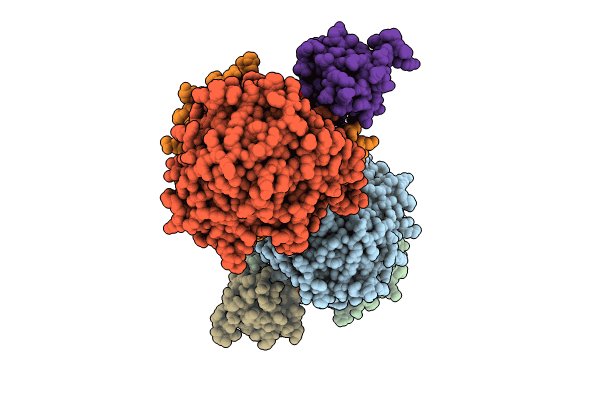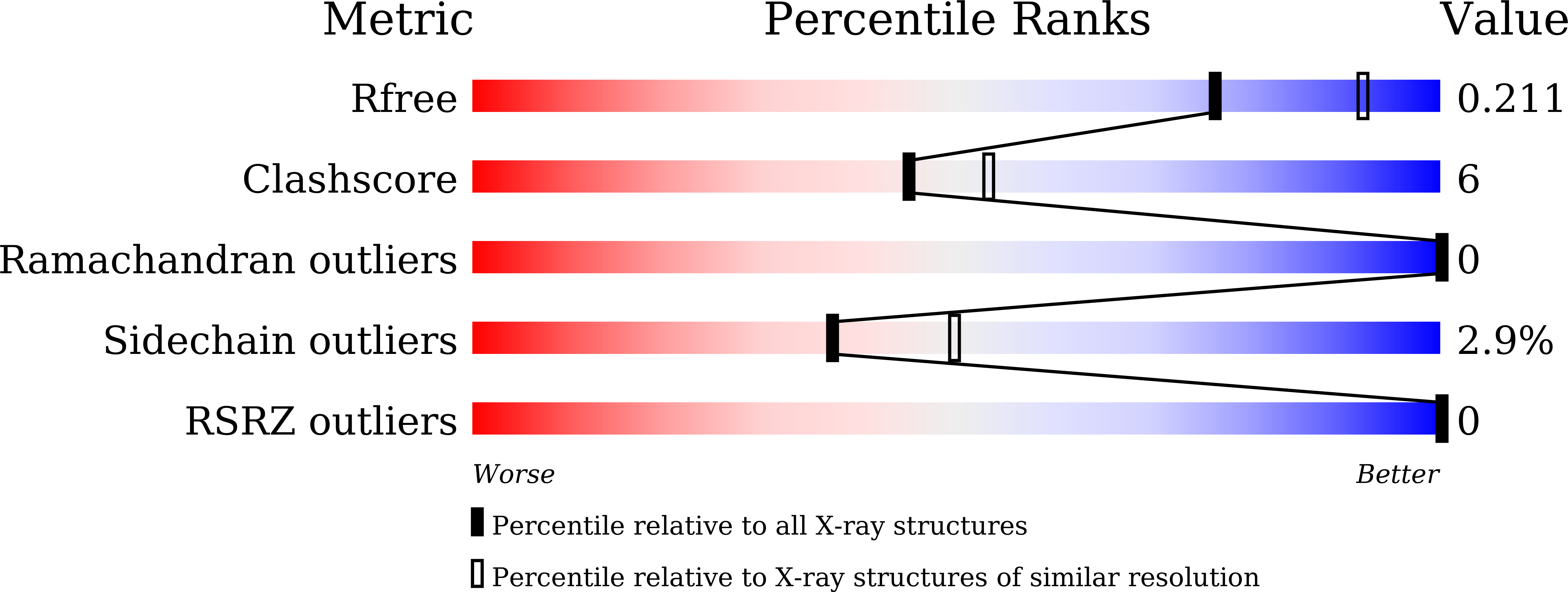
Deposition Date
2024-04-18
Release Date
2024-10-09
Last Version Date
2024-11-20
Entry Detail
PDB ID:
8Z5E
Keywords:
Title:
Crystal structure of beta-ketoacyl-ACP synthase FabF K336A in complex with octanoyl-ACP from Helicobacter pylori
Biological Source:
Source Organism:
Helicobacter pylori (Taxon ID: 210)
Host Organism:
Method Details:
Experimental Method:
Resolution:
2.20 Å
R-Value Free:
0.21
R-Value Work:
0.16
R-Value Observed:
0.16
Space Group:
P 1 21 1


